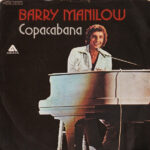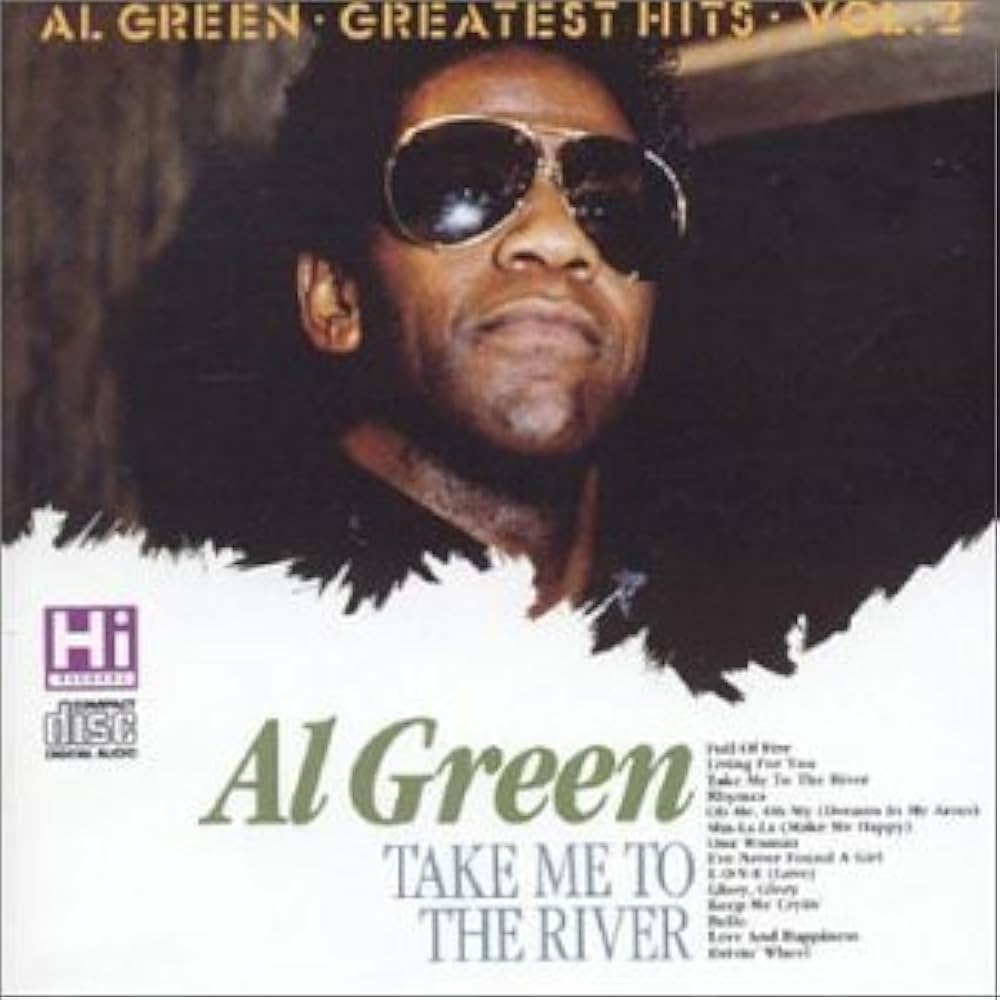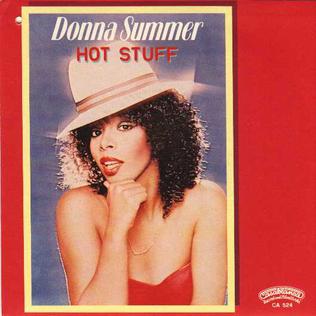 By the time “Copacabana (At the Copa)” hit the airwaves in 1978, Barry Manilow had already established himself as pop music’s reigning sentimentalist — the master of the tear-jerking ballad and the dramatic crescendo. He’d given the world “Mandy,” “Can’t Smile Without You,” and “Looks Like We Made It,” each one a heartfelt ode to love’s soaring highs and soul-crushing lows. But “Copacabana” was something different. It wasn’t just another Manilow song about romance — it was a full-blown movie compressed into four and a half minutes, a Technicolor Broadway production pulsing with congas, glitter, and tragedy.
By the time “Copacabana (At the Copa)” hit the airwaves in 1978, Barry Manilow had already established himself as pop music’s reigning sentimentalist — the master of the tear-jerking ballad and the dramatic crescendo. He’d given the world “Mandy,” “Can’t Smile Without You,” and “Looks Like We Made It,” each one a heartfelt ode to love’s soaring highs and soul-crushing lows. But “Copacabana” was something different. It wasn’t just another Manilow song about romance — it was a full-blown movie compressed into four and a half minutes, a Technicolor Broadway production pulsing with congas, glitter, and tragedy.
Released as part of his album Even Now in 1978, “Copacabana” turned Manilow from an easy-listening crooner into a theatrical storyteller. It was audaciously cinematic — part disco, part Latin jazz, and all heart. The song told a vivid story of love, loss, and fading glamour, set against the backdrop of the legendary New York nightclub that defined mid-century nightlife. But behind its flamboyant beats and irresistible groove lay something darker — a cautionary tale about obsession, fame, and how quickly the lights can go out on a dream.
To this day, “Copacabana” remains one of Manilow’s signature achievements. It’s the rare pop song that manages to be both fun and devastating, kitschy and profound. It’s the story of a girl named Lola, a showgirl in a yellow feathered costume, and Tony, her devoted bartender lover. Their love burns bright — until one night, in a haze of music and alcohol, violence erupts and tragedy strikes. By the final verse, the shimmering Copacabana has faded into memory, and Lola is left a broken shadow of her former self, still haunted by the music and the ghosts of her past.
From Ballads to the Disco Floor: The Birth of “Copacabana”
In 1978, Barry Manilow was at the height of his powers. He was winning awards, dominating radio, and selling out arenas. But he wanted to try something fresh — something outside the realm of the sentimental piano ballads that had made him famous. He teamed up with lyricists Bruce Sussman and Jack Feldman, and together they set out to write a song that would tell a story rather than simply convey emotion.
Sussman once recalled that the song’s inspiration came from a simple question Manilow asked: “Why hasn’t anyone ever written a song about the Copacabana?” The club — located on East 60th Street in Manhattan — was an icon of postwar nightlife, known for its Latin-infused music, celebrity clientele, and wild energy. Everyone from Frank Sinatra to Sammy Davis Jr. had graced its stage, and it symbolized a time when show business was glamorous, larger-than-life, and filled with danger just beneath the sequins.
Manilow and his team wanted to capture that electric spirit. What they came up with was part tribute, part tragedy — a disco-infused story song unlike anything else on the charts. When Manilow first played it for his record label, they were unsure. It didn’t fit neatly into pop, disco, or musical theater categories. But once it was released, audiences couldn’t get enough.
“Copacabana” quickly became a phenomenon, reaching No. 8 on the Billboard Hot 100 and earning Manilow his first Grammy Award — for Best Male Pop Vocal Performance in 1979. It was the kind of crossover success that proved he wasn’t just a balladeer; he was a showman, a storyteller, and one of the few artists who could bridge the gap between the concert stage and the Broadway spotlight.
The Anatomy of a Glittering Tragedy
From its opening drum fill and conga rhythm, “Copacabana” is pure theater. It begins with a flourish — the sound of a Latin-tinged percussion groove that immediately transports listeners to a sweltering, neon-soaked nightclub. Manilow’s delivery is pure showbiz charm, his phrasing sharp and his tone playful, pulling the listener into the drama like a master of ceremonies.
The story unfolds in three acts:
Act I: The Glamour.
Lola, “a showgirl with yellow feathers in her hair and a dress cut down to there,” dazzles the Copacabana crowd. Tony, the bartender, watches over her lovingly. They are the golden couple of the club, their love shining as bright as the dance floor lights.
Act II: The Conflict.
Enter Rico — a rich, jealous patron who demands Lola’s attention. When he makes an unwanted advance, Tony steps in to defend her. In a flash, the club descends into chaos: “Then the punches flew, and chairs were smashed in two.” It’s one of the most cinematic moments in pop music, a burst of violence that ends as abruptly as it begins.
Act III: The Fallout.
Years later, the song returns to the Copa, now faded and quiet. Lola is still there — but she’s no longer the radiant showgirl she once was. “Now she’s lost her mind,” Manilow sings, his once-joyful tone now filled with melancholy. The music slows, the horns soften, and the glitter fades to gray.
The brilliance of “Copacabana” lies in how it blends these tonal shifts seamlessly. The beat never stops, even as the mood turns tragic. The dance continues, but the joy is gone — a perfect metaphor for the way fame and nightlife can devour their own.
Manilow’s Vocal Performance: The Narrator and the Actor
Barry Manilow’s performance on “Copacabana” is nothing short of theatrical mastery. He doesn’t just sing the song; he inhabits it. His phrasing is deliberate and vivid, painting each scene with vocal nuance. When he sings of Lola’s glittering stage presence, there’s a sense of admiration and excitement. When the story turns violent, his delivery tightens, mirroring the chaos. By the final verse, his voice softens into sorrow, his phrasing elongated as if weighed down by years of loss.
Manilow’s Broadway sensibility shines here — every note, every pause, every inflection feels like part of a larger performance. You can almost see him on stage, spotlight following as he narrates the rise and fall of his doomed heroine.
This blend of pop structure and narrative drama was revolutionary for its time. Story songs weren’t new — artists like Harry Chapin and Jim Croce had done them beautifully — but “Copacabana” wrapped its tale in irresistible rhythm and flamboyant energy. It wasn’t just a story to listen to; it was one to dance to.
A Disco Classic with Depth
It’s easy to lump “Copacabana” into the disco category because of its danceable beat, Latin percussion, and shimmering orchestration. But it’s far more than a simple party track. Beneath the surface, it’s a song about how passion, fame, and jealousy can consume people.
In many ways, it mirrors the themes of classic film noir: glamorous settings masking deep emotional darkness. The Copacabana is both a place of joy and destruction — a glittering paradise that swallows its own stars. Manilow’s genius was in wrapping this tragedy inside an irresistibly catchy tune. Listeners could dance to it at weddings or sing along in the car without realizing they were grooving to a song about madness and death.
Even the song’s musical arrangement plays with that tension. The bright brass sections and tropical rhythms make the song feel celebratory, but the minor key melodies underneath add an undercurrent of melancholy. It’s that juxtaposition — the sadness beneath the sparkle — that gives “Copacabana” its staying power.
The Real Copacabana: From Sinatra to Stardust
The Copacabana nightclub itself was one of the most legendary venues in New York history. Opened in 1940, it quickly became the crown jewel of Manhattan nightlife. With its lush décor, Latin rhythms, and A-list clientele, it symbolized an era when glamour ruled and danger lurked just out of sight.
 Frank Sinatra, Sammy Davis Jr., and Dean Martin were all regulars. Performers like Nat King Cole and Carmen Miranda lit up the stage. And like in Manilow’s song, the Copa was often the scene of high drama — passionate romances, drunken fights, and the constant presence of mobsters and millionaires.
Frank Sinatra, Sammy Davis Jr., and Dean Martin were all regulars. Performers like Nat King Cole and Carmen Miranda lit up the stage. And like in Manilow’s song, the Copa was often the scene of high drama — passionate romances, drunken fights, and the constant presence of mobsters and millionaires.
Manilow captured that intoxicating blend of sophistication and chaos perfectly. His version of the Copa is both real and mythological — a place that exists in the collective imagination as a symbol of fleeting glory. By 1978, the club’s golden era had already faded, but the song revived it, turning nostalgia into myth. Which has resulted in a renaissance in the last few years
The Copa (in what was once known as Hell’s Kitchen, but today is MidTown West), as well as The Apollo Theater in Harlem, and Cotton Club, also in Harlem, are the only original historic venues of the golden age of Jazz and pop that still exist today.
In it’s current day environment, they host shows from the likes ranging from Lady Gaga to Harry Connick Jr to Oliva Rodrigo to other Latin stars like Bad Bunny and Pitbull
From Song to Stage to Screen
The success of “Copacabana” didn’t end with the single. Its story was so vivid that it practically begged for expansion. In 1985, Manilow turned it into a made-for-TV movie starring himself as Tony and Annette O’Toole as Lola. The movie expanded the song’s narrative, giving the characters more backstory and emotional depth while maintaining the glitzy, over-the-top tone of the original.
A few years later, Copacabana was adapted again — this time into a full-fledged stage musical. It premiered in London’s West End in 1994 and became a favorite among community theaters and high school drama clubs around the world. With new songs added by Manilow and his songwriting partners, it transformed from a disco hit into a full theatrical experience, blending humor, tragedy, and romance.
This progression — from hit song to multimedia phenomenon — underscores just how cinematic “Copacabana” always was. It wasn’t just a tune; it was a universe, complete with characters, setting, and emotional arc.
Lola: The Heart of the Story
At the center of it all is Lola, one of pop music’s most tragic and fascinating characters. She’s introduced as a figure of dazzling beauty and confidence — “Her name was Lola, she was a showgirl” — but by the end, she’s a haunting symbol of lost youth and obsession.
Lola’s descent from glamorous performer to broken soul echoes the archetype of the faded starlet — from Norma Desmond in Sunset Boulevard to Sally Bowles in Cabaret. She’s the embodiment of the cruel bargain of fame: the lights lift you up, but they can burn you, too.
Manilow’s empathy for Lola is palpable. He doesn’t judge her or sensationalize her tragedy. Instead, he treats her like a human being crushed under the weight of time and memory. That compassion is what makes the song resonate emotionally, even as it keeps your feet moving.
Cultural Impact and Legacy
“Copacabana” became far more than just another late-’70s hit — it became a cultural reference point. Its opening line is instantly recognizable, and its melody has become shorthand for vintage glamour and tropical nostalgia. The song’s energy was infectious enough to survive even after disco faded from mainstream popularity.
Manilow himself performed “Copacabana” at nearly every concert for the rest of his career, often with full choreography, backup dancers, and glittering costumes. It became his anthem of escapism, the one song guaranteed to turn any venue into a dance floor.
Over the years, “Copacabana” has been referenced in films, TV shows, and even cartoons — from Family Guy to The Simpsons. It’s been parodied, celebrated, and covered countless times, yet it never loses its power to make people smile, dance, or shed a tear for poor Lola.
To Show It’s longevity. 41 years after it’s release in 2019, BBC did a concerts series, which included Manilow playing Copa from my home town of Rochester NY at Darien Lake (Sold Out with 28,600 people). Which was the highest viewed video of the 61 song concert series
The Irony of Joy: Dancing Through the Darkness
Perhaps the greatest achievement of “Copacabana” is its ability to blend contradictory emotions. It’s joyful and tragic, campy and sincere, dazzling and dark. This emotional duality is what separates it from other disco-era hits.
While many songs of the late ’70s celebrated hedonism or escapism, “Copacabana” acknowledges the cost of that lifestyle. The Copa’s dance floor is a place of freedom — but also of danger. It’s a microcosm of life itself: dazzling, fleeting, and sometimes cruel.
Manilow once said that the song’s popularity surprised him because he never thought audiences would embrace such a sad story dressed up as a party anthem. But perhaps that’s exactly why it worked. Life is rarely pure joy or sorrow — it’s both at once. And “Copacabana” captures that truth better than almost any song of its era.
Conclusion: The Lights Still Shine at the Copa
“Copacabana (At the Copa)” is more than just a disco hit — it’s a time capsule, a tragic love story, and a masterclass in pop storytelling. Released in 1978, it captured both the glitter and the grit of nightlife, painting a portrait of love and loss that still feels relevant decades later.
Barry Manilow’s genius was in taking a simple idea — a nightclub love story — and infusing it with so much color, rhythm, and emotion that it became mythic. Like the club itself, “Copacabana” is a place where joy and heartbreak dance side by side, where dreams sparkle even as they fade.
To this day, when the opening conga rhythm starts and Manilow’s voice sings, “Her name was Lola…”, listeners are transported — to a world of feathers, sequins, and eternal longing. The lights of the Copa may have dimmed long ago, but the song ensures they’ll never go out completely.
At the Copa, music and memory are forever intertwined — and Barry Manilow’s bittersweet masterpiece will always keep the dance floor alive.


